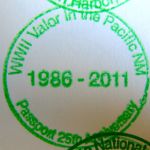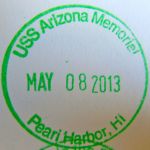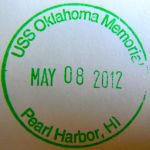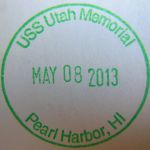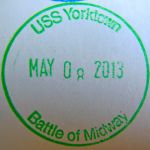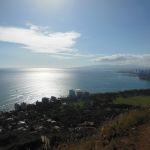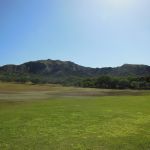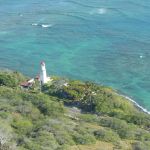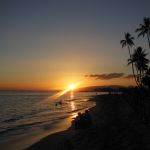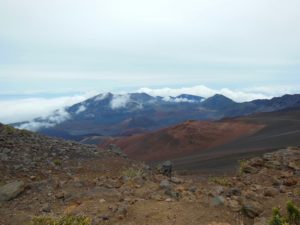 Okay, so kinda dropped off there for a while, but I’m trying to get back into writing about my visits to the National Parks. Especially since the National Parks are apparently part of the resistance these days…
Okay, so kinda dropped off there for a while, but I’m trying to get back into writing about my visits to the National Parks. Especially since the National Parks are apparently part of the resistance these days…
My most recent visit was to Haleakalā NP in Maui, Hawaii. We selected Maui for a family trip since it’s a direct flight, contains a National Park, and is a good size for a short visit (plus, you know, Maui!). Next time, maybe we’ll hit up the Big Island and Hawaii Volcanoes NP. I’ll admit, we spent a good portion of time watching whales (!) and turtles (!!) out our condo window, but we did take a day trip to the Haleakalā summit.
It’s pretty crazy going from literal sea level (with the turtles to prove it) to over 10,000 ft in less than 2 hours on the road, but that’s what a volcano will get you. Following the recommendation of our neighbor on the plane, we stopped in Makawao on the way up the mountain for pastries at the 100-year old Komoda Bakery (their guava pastries were amazing and may have contributed to our rental car ant problem…) and a tasty cup of coffee at Sip Me. We also grabbed lunch supplies at the market as there are no concessions in the park.

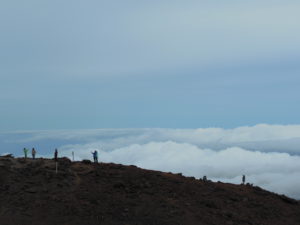 You can stop in the small headquarters visitor’s center, where I got my Passport stamps, a few miles before the summit. At the summit itself, there is a small shelter with a panoramic walk around. We could see the snowy peaks of Mauna Loa and Mauna Kea on the Big Island. I was a little disappointed the observatory complex is not open to the public, but since the terrain was similar to what I imagine Mars to be like, maybe we don’t need to look to the stars! It is supposed to be one of the best viewing areas in the world, however, if you do.
You can stop in the small headquarters visitor’s center, where I got my Passport stamps, a few miles before the summit. At the summit itself, there is a small shelter with a panoramic walk around. We could see the snowy peaks of Mauna Loa and Mauna Kea on the Big Island. I was a little disappointed the observatory complex is not open to the public, but since the terrain was similar to what I imagine Mars to be like, maybe we don’t need to look to the stars! It is supposed to be one of the best viewing areas in the world, however, if you do.
Now that we have a toddler on our hands, it’s fun to watch him explore the parks. Little guy walked the path from the parking to the summit himself so that we could tell him he summited a volcano (I think this was his third volcano, but first trip to the beach… priorities!). He also immediately took an interest in the red volcanic rocks on the ground. To cover a little more ground, we pulled out the hiking carrier and walked the first little bit of the Sliding Sands trail, which follows a long arc into Haleakalā crater. Interesting, the crater was carved out by water, not a volcanic blast as you might expect. It was a pretty cool site, with lots of colors contrasting with the stark landscape.
On our way back down the mountain, we stopped at Hosmer Grove, where there is a nice nature trail of the perfect length for toddlers to explore! The area was full of local birds ~ we saw at least ‘amakihi and ‘i’iwi, and I learned it is harder than usual to identify and take pictures of birds with toddlers in the mix. We also saw non-native chukar and pheasant in the park, but didn’t run across any nene.

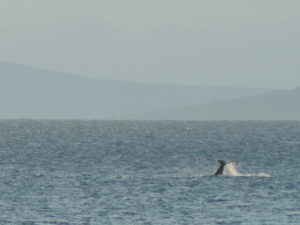
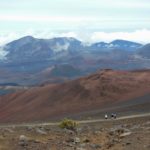
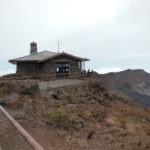
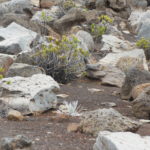
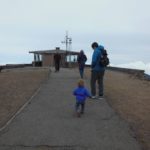
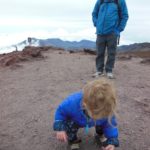
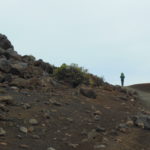
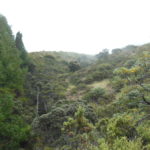
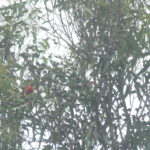
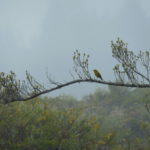
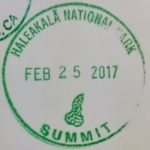
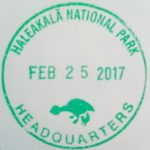
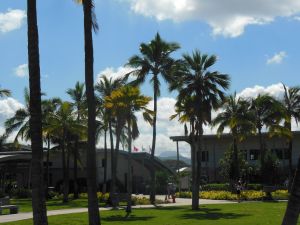
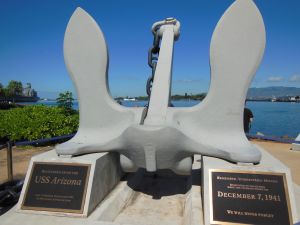
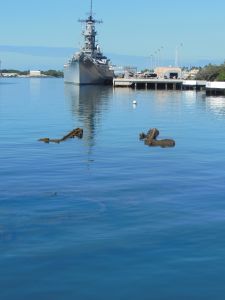 The Visitor’s Center has a museum and is the base for the U.S.S. Arizona, Utah, and Oklahoma memorials, honoring those ships and the people who perished in the attacks. The museum gives the details of the events of Dec. 7, 1941, including the military details of the attack and the day as it played out for the people of Pearl Harbor. There are some interesting artifacts, including a marked up draft copy of FDR’s famous “a date that will live in infamy” speech. The exhibits definitely freshened my memory from that report I wrote in 3rd grade…
The Visitor’s Center has a museum and is the base for the U.S.S. Arizona, Utah, and Oklahoma memorials, honoring those ships and the people who perished in the attacks. The museum gives the details of the events of Dec. 7, 1941, including the military details of the attack and the day as it played out for the people of Pearl Harbor. There are some interesting artifacts, including a marked up draft copy of FDR’s famous “a date that will live in infamy” speech. The exhibits definitely freshened my memory from that report I wrote in 3rd grade…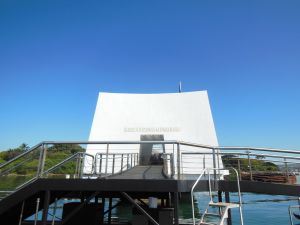 “centerpiece” of the monument. The memorial is only accessible by boat with a ticket from the Visitor’s Center. The short boat ride across the harbor is preceded by a film, and then visitors are given time for observation at the memorial, which is built immediately over the ship. Almost 1800 men were lost when the ship sunk and are still entombed there. The names of all those lost in the Arizona are engraved onto a wall at the far end of the memorial.
“centerpiece” of the monument. The memorial is only accessible by boat with a ticket from the Visitor’s Center. The short boat ride across the harbor is preceded by a film, and then visitors are given time for observation at the memorial, which is built immediately over the ship. Almost 1800 men were lost when the ship sunk and are still entombed there. The names of all those lost in the Arizona are engraved onto a wall at the far end of the memorial. 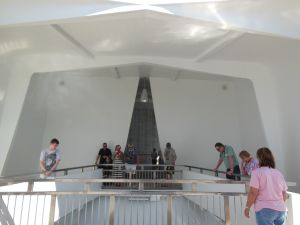 Interestingly, a side panel also lists the names of U.S.S. Arizona survivors who later requested to be interred there. From the observation deck, you can see fish darting in and out of the corroded metal of the Arizona and oil slicks that to this day still rise to the surface.
Interestingly, a side panel also lists the names of U.S.S. Arizona survivors who later requested to be interred there. From the observation deck, you can see fish darting in and out of the corroded metal of the Arizona and oil slicks that to this day still rise to the surface.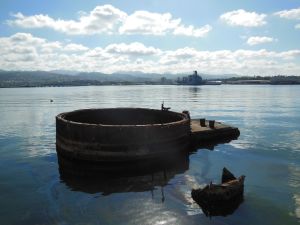 In addition to the U.S.S. Arizona memorial, there is a small, separately managed naval museum including a small sub available for tour at the site of the visitor’s center. I believe a shuttle will also take you over the U.S.S. Oklahoma Memorial, but the Utah is not open to the public as it is on the active military base.
In addition to the U.S.S. Arizona memorial, there is a small, separately managed naval museum including a small sub available for tour at the site of the visitor’s center. I believe a shuttle will also take you over the U.S.S. Oklahoma Memorial, but the Utah is not open to the public as it is on the active military base.